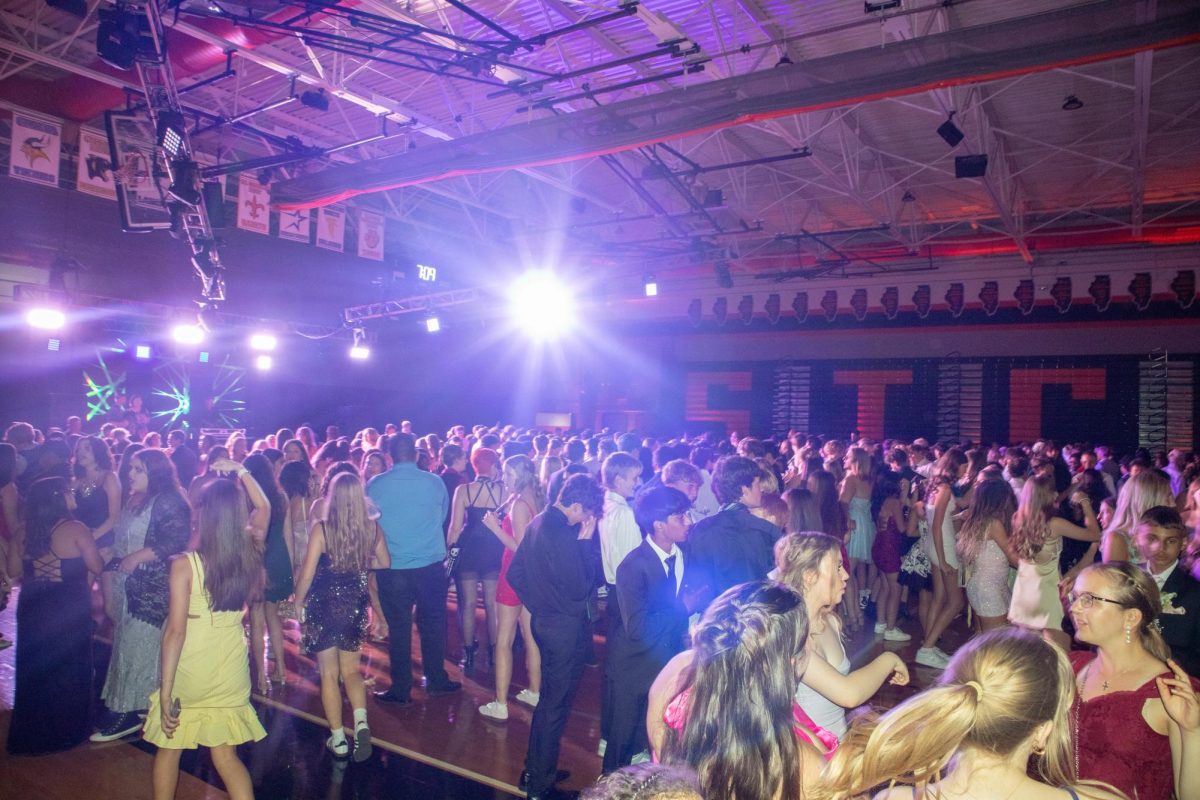The recent substitute shortages at East have been noticed by students and teachers alike. Whether this is waiting outside an empty classroom after the bell rings or walking into class and seeing the principal as your substitute, the effects of this shortage have now become increasingly apparent.
X-Ray staff reached out to district administrators to learn the full lengths of the shortage including how it came about, what it entailed for the school and the plans to fix it.
Marci Conlin, the Assistant Superintendent for Human Resources at D303, stated that it’s been a struggle to recruit enough substitutes for around five years now.
She also clarified that the shortage hasn’t just been limited to the school or district; rather, this has become a countrywide issue.
When asked for an overview of the shortage, Principal Jim Richter said, “Just like many companies and businesses, it’s becoming more challenging to find people who are actively seeking opportunities for employment. And so having substitutes is really no different than them. So the pool of substitutes has, from my perspective, consistently sort of dwindled over time.”
Overall, the issue seems to be more of a lack of supply of sub stitutes rather than, say, an increased demand for them. But what caused this deficit? There doesn’t seem to be one clear reason; rather, many factors that all eventually contributed to a noticeable shortage.
The most prominent reason was payment. Janit Ramos, a Substitute Coordinator at East, was able to provide the specific numbers.
As of November 2021, the standard rate for substitutes was $120/day with a loyalty bonus to $140/day after a substitute has subbed for at least 31 days. Conlin further broke down what this meant. “The pay for being a substitute isn’t very high for some of the things you may have to do, […] so people might not see the pay being as valuable to them as maybe a different job where they don’t have so much responsibility.”
She also attributed the issue to a declining interest in working in education in the first place due to low pay rates and teaching being talked about as mainly a negative experience. It’s a factor that has also led to a general teacher shortage, thus affecting substitutes as well.
Another explanation for the shortage is COVID; though the shortages prevailed even before the pandemic, COVID only seemed to magnify the issue.
Ramos recalled, “A big base of our substitute teachers are retired people/senior citizens. And with COVID they were very cautious and stopped subbing, and then they didn’t come back. I would say over half or three-fourths [of our substitutes] did not come back to sub.”
As a substitute coordinator for STCE, Ramos has seen the many effects of this shortage firsthand. She stated that substitute coordinators have had to utilize external subs as well as internal “Teacher” and “Admin” subs to fulfill the sub needs, making the work very stressful.
“For the substitute coordinators such as myself, our jobs are incredibly stressful,” she said. “It just creates a more chaotic environment and it puts strain on everyone; not just the substitute coordinators, but also we’ve had to utilize the administrators [and deans] to help sub classes, we’ve had to combine classrooms….I mean, that changes the impact of a normal day.”
Conlin expanded on these effects on both teachers and students: “Our teachers and support staff have had to fill in when teachers aren’t here and there isn’t a substitute. That puts stress on them. There’s time that’s taken away from their planning or their time that they collaborate with other teachers. I think the students also suffer when there isn’t a substitute there because they might have a different person coming into a classroom instead of just one consistent person there all day.”
When asked about the efforts being made to fix the shortage, Ramos described the increased pay rates they’ve offered. This year, the rates for substitute teachers were raised to $145/day with a $165/day loyalty bonus. They’ve also offered further monetary incentives for retirees to come back and sub for $200/day with a $220 loyalty bonus.
Conlin also mentioned that the district has been recruiting substitutes through social media in order to get word out to the community. With new laws that allow student teachers to substitute as well, efforts have been taken to reach out to those individuals to encourage them to apply as well.
Richter emphasized showing support for those willing to help. “The only thing that we can do here in our building is try and be as supportive of our substitutes as possible [and] just show appreciation for the fact they’re coming here.”
He also noted some positive takeaways from the shortage. “I think it’s really caused a lot of opportunities for staff members to step up and fill in for some of those spots. And our staff is outstanding: they take care of each other, they take care of those kids as [these] situations come up, […] it’s really a great thing that they’re willing to step up and do that.”
These plans seemed to have worked in the last year. Ramos describes noticing a significant improvement in the shortage ever since the pay raise, and Conlin backed this up by referencing defined “fill rates” that describe how many positions they’ve been able to successfully fill. Last year, fill rates were around 60-70%, while this year, they have dramatically increased to 80-95%.
“It’s already gotten better this year, so I think it will just continue to get better,” Conlin said. “And will hopefully get [us] back to where we were before the pandemic and even before we started to see the drop-off.”








